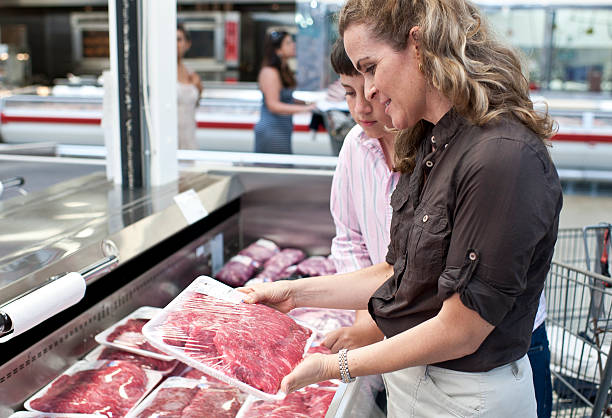Planning to cook steaks for friends and family? When it comes to buying steaks in large quantities, there is a golden rule that should be followed, and it has nothing to do with the weight of the package or the specific breed of cattle. The key factor to look for is – all the steaks should have the same thickness.
Why is Uniform Thickness Important?
Uniform thickness is crucial for several reasons. Firstly, when cooking for a group of people, it’s important to ensure that everyone is served a fair portion. If there is a thinner steak in the package, someone may unintentionally receive a smaller piece. Next and more significantly, steaks need to be of the same thickness to ensure even cooking. Thinner cuts will cook faster than thicker ones, causing inconsistencies in doneness. By having all the steaks of uniform thickness, you eliminate this concern and achieve consistent cooking results.
Determining Uniform Thickness
While it’s not necessary to measure each steak with a ruler, it’s essential to have an understanding of the desired thickness. Industry standards dictate that most premium steaks should have a thickness of approximately an inch and a half. This is something that reputable steakhouses like Fleming’s know too well.
But most steaks available at grocery stores tend to be around one inch thick. This thickness is fine for:
- Ribeye
- Sirloin
- New York strip
- Porterhouse
- But you’ll need thinner cuts for:
- Flank
- Skirt steaks
Although the steaks may not be exactly the same down to the millimeter, they should be close enough that any differences are not noticeable to the naked eye. However, you should be able to distinguish between a one-inch and a one-and-a-half-inch thick steak with a quick visual inspection. If you have access to a local butcher, you can make the process even easier by requesting them to cut the steaks to your preferred thickness.
Ideal Thickness for Popular Steak Cuts
While personal preferences may vary, there are general guidelines for the ideal thickness of various steak cuts. Adhering to these guidelines can help you select steaks that are more likely to achieve the desired level of doneness:
- Ribeye, New York Strip, and Filet Mignon: Aim for a thickness of around 1 to 1.5 inches. This thickness allows for a good sear while ensuring the center remains tender and juicy.
- Sirloin and T-Bone: Go for a thickness of approximately 1 inch. These cuts are naturally tender, and a thinner steak allows for faster cooking without sacrificing tenderness.
- Flank and Skirt Steak: These cuts are typically thinner, ranging from 1/4 to 1/2 inch thick. Thinner cuts require shorter cooking times to prevent toughness, so be sure to monitor them closely to avoid overcooking.
Tips for Cooking Thin and Extra-Thick Steaks
When working with thin steaks, it’s important to adjust your cooking approach to ensure even cooking without drying out the meat. Consider the following tips:
- Preheat your grill or pan to high heat to quickly sear the thin steak and lock in the juices.
- Since thin steaks cook rapidly, reduce the cooking time to prevent overcooking. Use an instant-read thermometer to monitor the internal temperature for precise doneness.
On the other hand, cooking extra-thick steaks requires a slightly different approach:
- Sear and finish in the oven. Start by searing the steak on high heat to develop a crust, then transfer it to a preheated oven to finish cooking to the desired doneness.
- Utilize a meat thermometer. Due to the longer cooking time required for thicker steaks, using a meat thermometer is essential to ensure they reach the desired internal temperature without overcooking.
Here’s Gordon Ramsay’s guide to cook steak:
